As we work our way through the effects of the hurricanes on the economic data, the news remains very positive. October’s results largely preserved or even improved on September’s strong data, with job growth rebounding and confidence at high levels for both business and consumers. Fed policy, despite the expected rate hikes ahead, remains stimulative.
Overall, this month’s data indicates continued expansion and even some acceleration. The persistence of the positive data trends though the hurricanes is another positive sign. Of course, we still need to keep an eye on the risks.
The Service Sector
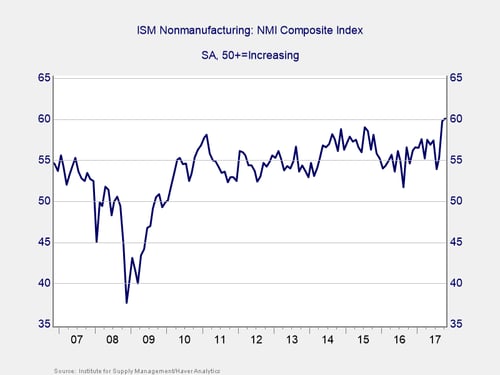
Signal: Green light
After a surprise decline in July, the Institute for Supply Management (ISM) Nonmanufacturing index bounced back for the third month in a row. The recent increase brings this measure of business confidence to a post-recession high, and the Manufacturing index is at a similarly high level. These are very strong numbers. Plus, the Nonmanufacturing index saw further improvement from the post-hurricane print, suggesting the gains there were real—and getting better. Going forward, these high levels of confidence should help support accelerated growth, leaving this indicator a green light.
Private Employment: Annual Change
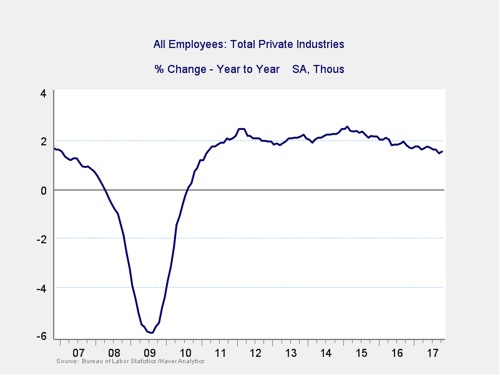
Signal: Green light
October job growth more than reversed the September drop from the hurricanes. Although it came in slightly below expectations, upward revisions to previous months offset the shortfall, leaving the actual number of jobs as expected. Job growth continues to be well out of the trouble zone. But even with this month’s rebound, the downward trend continues—suggesting we are moving toward the end of the cycle.
Because this is an annual figure, the changes are slower and smaller than those we see in more frequently reported data. Overall, given the volatility of employment growth, this indicator remains a green light, although the current downward trend bears monitoring.
Private Employment: Monthly Change
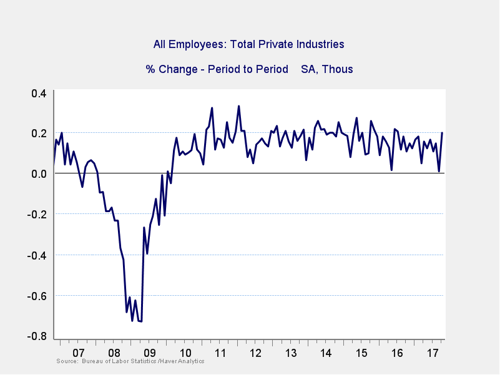
Signal: Green light
These are the same numbers as in the previous chart but on a month-to-month basis, which can provide a better short-term signal.
As noted above, October more than reversed last month’s decline. This was the first monthly decline in jobs in years and demonstrated that the weak September result was simply due to the hurricanes. Given the rebound, this indicator remains a green light.
Yield Curve (10-Year Minus 3-Month Treasury Rates)
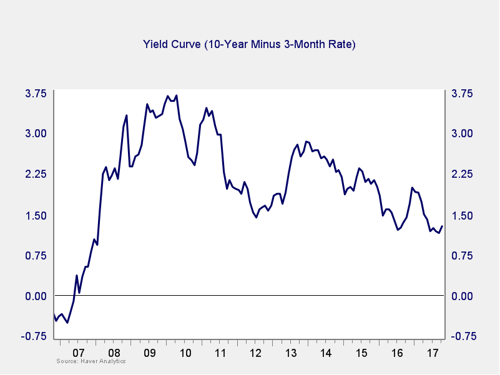
Signal: Green light
The spread between the 10-year and 3-month rates ticked back up a bit last month. It remains close to the lowest level since the financial crisis and appears to be stabilizing. As such, and since the spread remains well above the trouble zone, we are leaving this indicator at a green light but will continue to monitor it. Future rate hikes by the Fed might narrow the spread further, which will be a key area of concern into next year.
Consumer Confidence: Annual Change
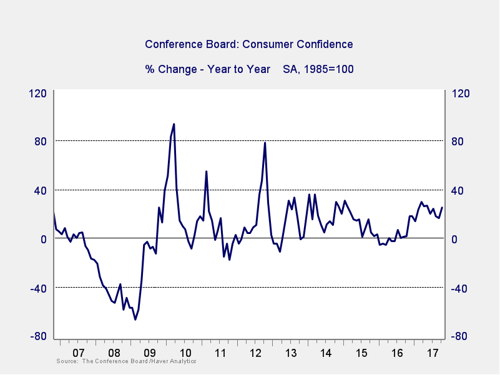
Signal: Green light
Consumer confidence increased by much more than expected in October. This surprising development indicates that the strong employment market and stock market have kept people optimistic. At the highest level since 2000 and with year-on-year change at strong levels, this indicator remains a green light.
Conclusion: Economy healthy, positive trends improve
The continued strength in consumer and business confidence is a significant positive factor and largely offsets the slowing trend seen in job creation. In addition, the recent stabilization in the yield curve reduces the immediate risk. Overall, conditions remain favorable, and economic risks are well contained.
The economy gets a green light for November.



 Print
Print

